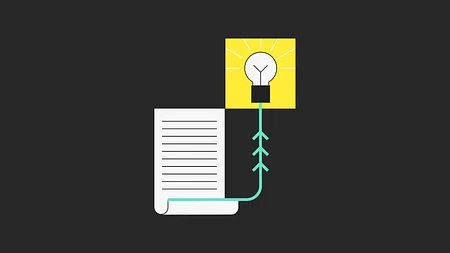The metaverse will power a new era of industrial efficiency

Delivered straight to your inbox
Get each edition of Unfiltered - our no-BS, uncensored analysis of fintech news and hot topics sent to your inbox each fortnight.
Find out more
Imagine a crane operator, but not any crane operator, this one is wearing a pair of AR goggles, in which a layer of relevant data and information about every container being moved is shown, ensuring that, not only the right job is done, but also the job is done right.
Every swing of the crane takes a container from a ship onto the terminal deck, and as it moves, the container itself streams the money to pay for its own insurance premium, which varies as the overall conditions around the container change: location, speed, height, wind, temperature… And when it is finally sat at the top of the stack, the premium is reduced to a minimum, continuous flat fee, continuously streaming.
At the same time, the trucks that are lined up start to move towards the corresponding parking spot, the windshield of the trucks show exactly where to stop, and which loading crew to walk to, as customs officials scan the container terminal for confirmation of the corresponding taxes. Once it’s loaded onto the truck, the container processes the payment itself. Customs agents get notified on their own.
As [technology] prices become increasingly affordable, so will their utilisation in functions that today seem far-fetched.
It’s all in the data
On the other side of the world, the seller/exporter is monitoring the cash balances of the wallets on each of its containers, while the insurance company proportionally releases the provisions it has set up for the shipped containers, bumping the P&L of that individual policy.
The bank that funded the export agreement also linearly unwinds the fractionalised FX hedge as the containers move across the world and, as the cargo approaches its destination, the seller is gradually paid. At the same time the buyer’s balance is gradually streamed, and the buyer patiently awaits the delivery, upon which all of the corresponding transactions have been cleared and settled almost simultaneously with their corresponding business events. The bill of lading is but a smart contract running nonstop ensuring that terms and conditions are executed whenever triggers are met. It’s a global, real-time, trusted, cross-sector data network. (btw check out our jargon-free explainer of smart contracts and all things web3 here).
This seemingly impossible scenario is a combination of various - and for now, expensive - technologies, but as their prices become increasingly affordable, so will their utilisation in functions that today seem far-fetched.
In that scenario we’re picturing some of these technologies and their corresponding roles, as follows:
- The internet of things (IOT) is the touchpoint between the physical and the digital worlds, enabling the continuous flow of data across devices and into the underlying data infrastructure;
- Artificial intelligence (AI) is the engine making sense of the available data, and producing quality, timely information for decision-making in real time;
- Augmented reality (AR) is the display and interaction layer, where the result of the real-time data processing is presented, atop the physical world, guiding the operator’s decisions and actions and feeding them back into the data engine, in a continuous cycle;
- Blockchain, the decentralised transactional infrastructure, is where the digital twins of every real life object (or asset) exists, where all of the transactional data is settled, and every business event is communicated across the various interested parties - the decentralised source of truth, triggering on- and off-chain business processes and downstream transactions.
Industry 4.0, possible
This combination of technologies enable a new set of functional paradigms that finally put industry 4.0 to good use:
- Every asset can be a self-liquidating asset, as real world objects have an individual unequivocal digital twin, they can be programmed to perform business functions, and business processes can be programmed to interpret those assets’ behaviours and then generate corresponding downstream actions: payments, provisions, warnings, notifications, etc;
- Physical risks can be monitored in real-time, and the corresponding mitigating action can be put in place, be it an action in the physical world that will correct the course of events, or a trigger to a larger premium or even a claim against a decentralised insurance policy, a smart contract constantly monitoring those risk updates, with a pool of risk-takers;
- Wearables can monitor the execution of the activities by the workforce, providing real time feedback, helping to mitigate execution risks, but still maintaining the control by the worker, enhancing the awareness and the ability to perform high-value tasks with near-zero risk, but triggering the corresponding protections if needed.
With the evolution of technologies and their affordability coming to the forefront we are very likely to see the ultimate implementation of industry 4.0, with the combination of IOT, AI, AR and blockchain, enabling a form of augmented humanity - a real-time data layer placed over the real world informing us of what we are dealing with. And as tasks are executed, triggering underlying business processes and their financial and risk counterparts, we can maximise what we are able to execute as humans - where robots can't be liable - and streamline admin overheads. Finally leading to improved decision-making at every step of the value chain.
The industrial metaverse will fundamentally impact how we work, from crane operators at shipping terminals to brain surgeons at cutting-edge hospitals to hedge fund managers in Wall St - and they will all be interconnected. It’s not by chance that the World Economic Forum recently had a panel about the industrial metaverse in Davos, and MIT published a Siemens-sponsored research report on the topic.
Entire economic sectors will be able to tap into a world of efficiencies that are currently invisible, unreachable or simply non-existent.
My unfiltered opinion
Yes, metaverses are currently a thing of video games, but the actual impact will be in the real world. By combining and orchestrating its underlying technologies, entire economic sectors will be able to tap into a world of efficiencies that are currently invisible, unreachable or simply non-existent. With the economic climate worsening by the hour, this could well be the turning point for recovery. The prize is ours to lose.
How web3 is shaping the future of finance | Report
Downloaded over 5,000 times, our groundbreaking report covers the world of web3 including tokens, Stablecoins, DAOs, wallets and more. It's a must-read for the crypto-natives and crypto-curious.
Download now



